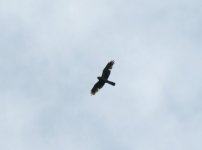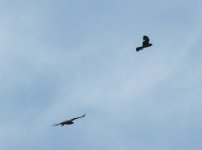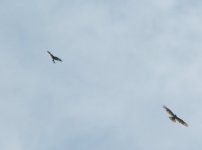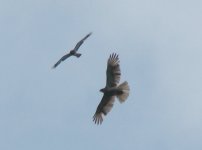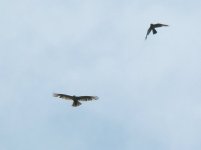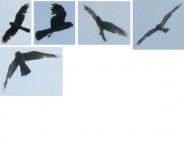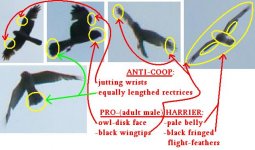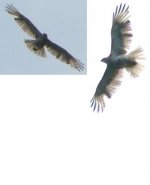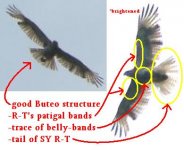Gillian_M
Birding since 2006!
While out in a marshy area just west of Ottawa I was treated to an aerial battle between two hawks. The smaller one kept mobbing the larger one. I think I have an accipiter and a buteo, but they were both backlit and I'm not sure what species they are. They smaller one was quite vocal, making a rapid, high-pitched cry that sounded like eck-eck-eck-eck. The larger one was silent.
Can anyone positively ID these combatants through the limited detail visible in these silhouette photos?
Thanks!
Can anyone positively ID these combatants through the limited detail visible in these silhouette photos?
Thanks!




